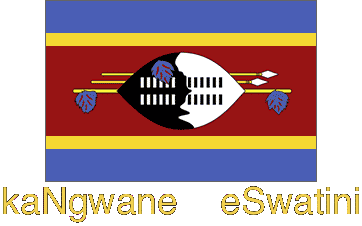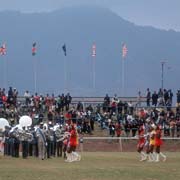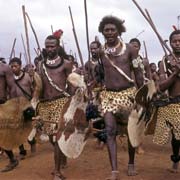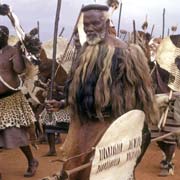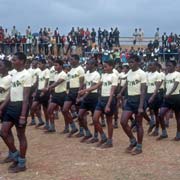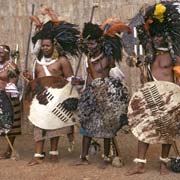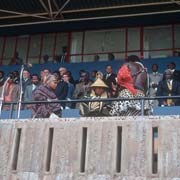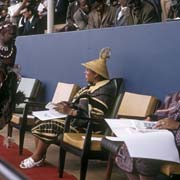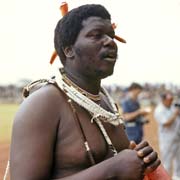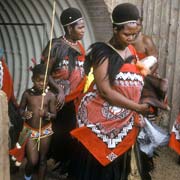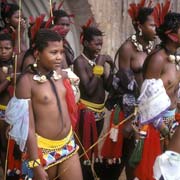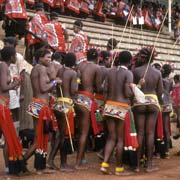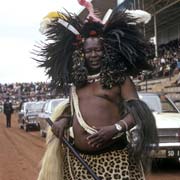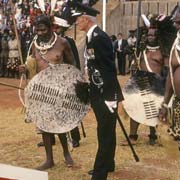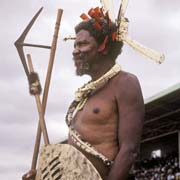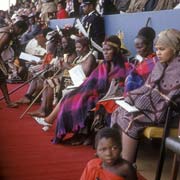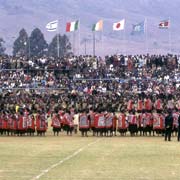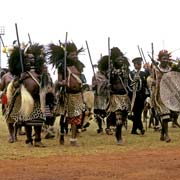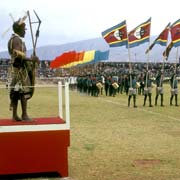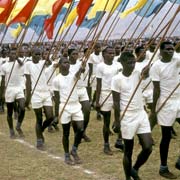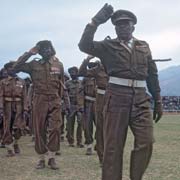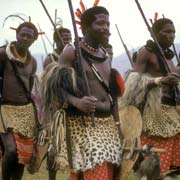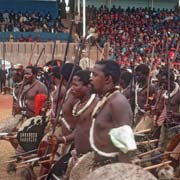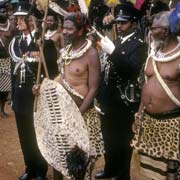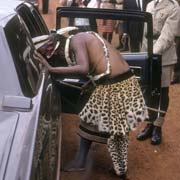Photos of Swaziland Independence Celebrations in 1971, Swaziland
Swaziland Independence Celebrations in 1971
Swaziland received its Independence from Britain on 6 September 1968 and this date has been celebrated in the Kingdom ever since. Each year there are ceremonies in the Somhlolo Stadium in Lobamba, the Royal capital to celebrate this with the whole nation.
you may then send it as a postcard if you wish.
Somhlolo, ("The Mystery") was a name given to Sobhuza I, who was King of the Swazis in the first decades of the 19th Century. He moved the centre of his power to what is now central Swaziland, consolidating his power and he can therefore be considered as the founder of the country as it is today. Therefore Independence Day is also called Somhlolo Day, the occasion when the nation comes together and foreign guests are invited to a spectacular ceremony that showcases Swaziland's unique traditional culture.
At the third anniversary of Independence, a new Swazi regiment marched into Somhlolo Stadium. Swazi men, from the time of King Mswati I in the mid-19th century, always belonged to age-grade regiments or "emabutfo" and they dressed in their traditional warrior's attire. In 1969, one year after independence, two new regiments were formed: Gcina (meaning "End of an Era") for men aged 15 to 25 and Inkhanyeti ("Star") for boys under 15. The Gcina regiment of young men marched into the stadium wearing yellow T-shirts with "GCINA" emblazoned on the front and black shorts. They demonstrated athletic prowess before that, and it was said they received training in agriculture methods by an Israeli team.
Among the guests at the festivities was the wife of King Moshoeshoe II of Lesotho, who was shown to her seat by Prince Masitsela, a senior member of the Royal Family. The "emakhosikati", the King's wives, then arrived through the tunnel underneath the stadium, each immaculately dressed in black "sidvwaba" skirt topped by a colourful "emahiya", their hair done up in "sicolo", the beehive hairstyle reserved for married women. The "bantfwabenkosi", the King's daughters, would then arrive, with the young, unmarried girls dressed in their "indlamu" bead skirts with "umcwasho" tassels and with red "ligwalagwala" (lourie) feathers in their hair, a mark of Royalty. The "Ndlolovukati" or Queen Mother would arrive and finally the king himself, the "Ngwenyama" (meaning Lion), His Majesty King Sobhuza II.
Wearing full traditional dress, he mounted the Royal dais, attended by the Commissioner of Police, an Englishman, Mr. Smithyman. After delivering his speech to the Nation, he joined the hundreds of warriors in their age-grade regiments and, with members of his own Balondolozi Regiment, danced the ancient slow warrior dance, the "iNqaba kaNqofula". His sons would be among the regiments and his daughters and wives would dance opposite the men. He mounted the red dais and the traditional regiments and the young Gcina Regiment, including scouts, carrying flags, paraded past the King. They were followed by the Swazi Pioneer Corps, Veterans from the Second World War, old soldiers proud in their uniforms. The ceremonies over, the King would leave in his gleaming black Cadillac, a gift from the United States Embassy.
See also: Independence Celebrations in 1970, the Celebrations in 1972, '73 and '74 and Video of the Celebrations of 1973.


